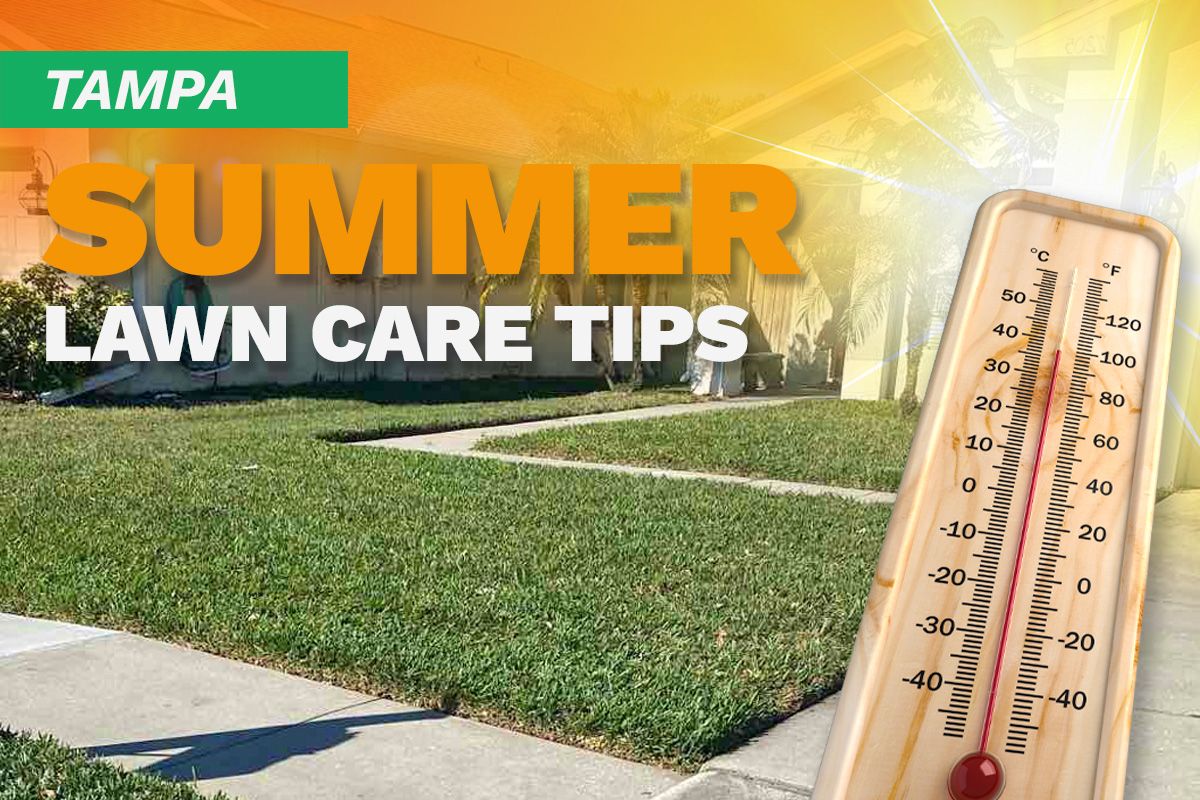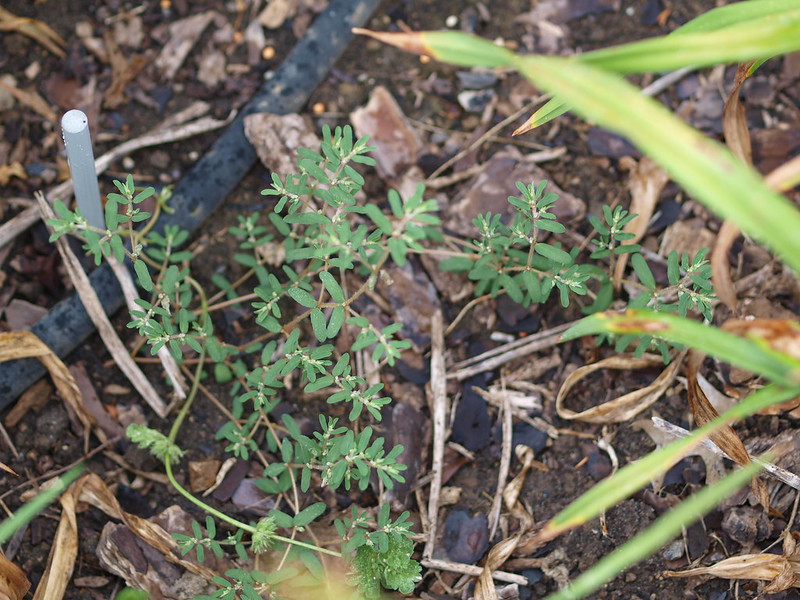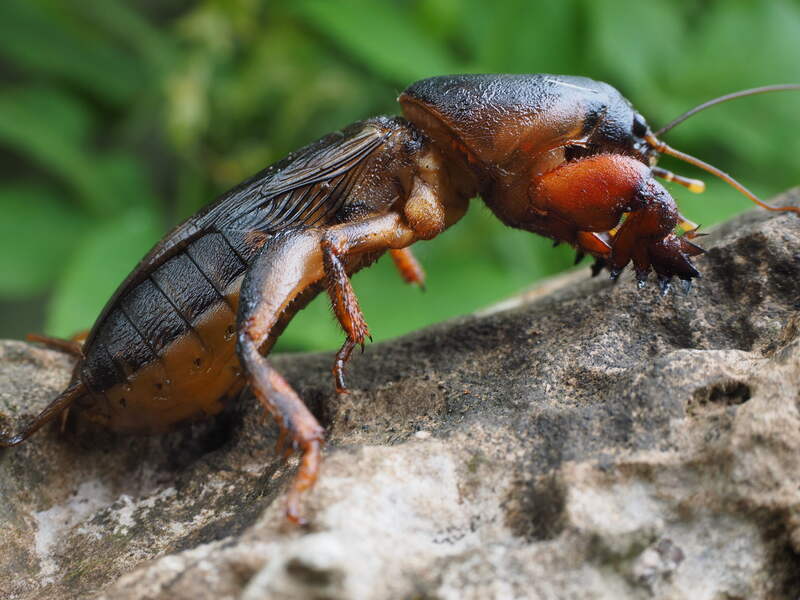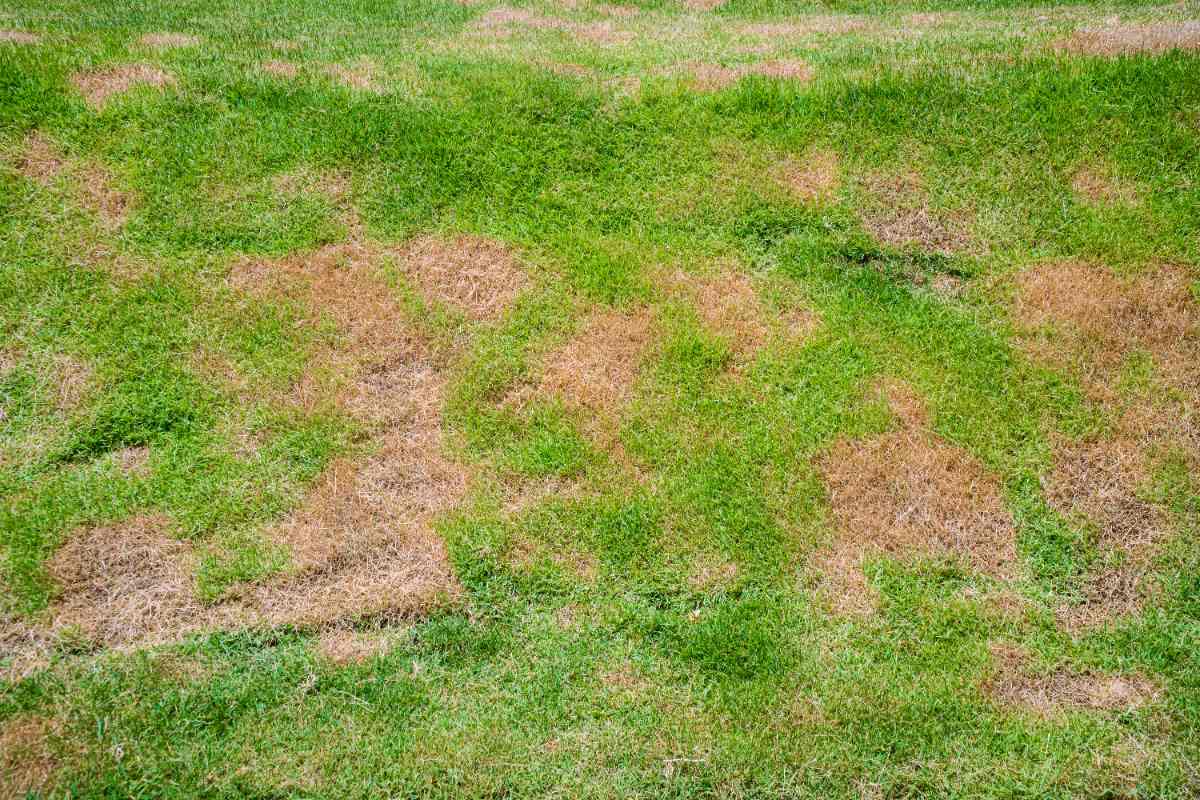
Summers in Tampa and St. Pete are amazing, but those 90-plus degree days can also be tough on your lawn. Here, you need a sound lawn care strategy that includes proper watering, regular mowing, and protection from pests and lawn disease.
So when the mercury climbs here in Hillsborough, there are things you should do: keep your lawn hydrated and your grass longer, and be on the lookout for weeds and diseases that thrive in hot, humid, rainy conditions.
1. Water in Tandem With Mother Nature
In most areas of the country, lawn watering is a typical summer chore, but Tampa gets watering help from above. Frequent afternoon thunderstorms dump an average of 24 inches during the summer alone, according to the National Weather Service.
This is good. Your lawn needs 1 to 1.5 inches of water a week during the high heat of summer to thrive. A few ideas:
Invest in a rain gauge: Knowing how much rain your lawn gets every week can save you some effort. For example, if your Zoysiagrass gets the 1.5 inches it needs, you’re fine. If not, then supplement on the day you are allowed to water.
Another reason to keep track of rainfall: Tampa’s watering regulations curtail irrigation when sufficient rain has occurred in the last 24 hours.
Maintain your sprinkler system: Florida requires all automatic irrigation systems to have a rain-sensing device, so make sure yours is working and is set correctly. Also, inspect the system for leaks as well as broken, misdirected or blocked spray heads.
Water in the morning: If you do need to water, set the sprinklers to go off between 4 a.m. and 10 a.m. on your watering day. This minimizes evaporation and gives the grass a chance to dry, which reduces the chance of lawn disease.
Read more:
- 5 Lawn Watering Tips in Tampa
- How Much Water Does Zoysiagrass Need?
- How Much Water Does Centipedegrass Need?
2. Don’t Cut Grass Too High or Too Short

Regular mowing isn’t just about aesthetics; it keeps your lawn healthy. Mow at the highest recommended length for your grass. Overgrown grass can encourage diseases and create havens for pests. It also encourages thatch, a buildup of organic material that can prevent your lawn from absorbing water and nutrients.
Some recommended lengths:
- St. Augustinegrass: 3.5 to 4 inches, or 2 to 2.5 inches depending on cultivar
- Zoysiagrass: 1.5 to 2 inches
- Centipedegrass: 1 to 2 inches
- Bermudagrass: 1 to 2 inches
- Bahiagrass: 3.5 to 4 inches
- Seashore Paspalum: 1 to 2 inches
Don’t cut more than a third of the grass blade per mowing. Giving the lawn a buzz cut stresses the turf, leaving it susceptible to disease and drought.
Finally, keep your mower blades sharp. Dull blades tear the grass, making it vulnerable to disease.
Read More:
3. Fertilize Your Lawn in an Eco-Friendly Way
Technically, you shouldn’t fertilize your Tampa lawn during the summer. Those afternoon thunderstorms will wash fertilizers off your grass and into the waterways that provide the area’s drinking water.
Also, the City of Tampa, plus Manatee and Pinellas counties, ban the use of fertilizers containing nitrogen or phosphorus from June 1 to Sept. 30.
So, how do you add nutrients to your soil without damaging the environment? A few ideas:
- Fertilize in May before the wet season starts.
- Leave grass clippings on the lawn: Clippings are a natural source of nitrogen.
- If you must use fertilizer, choose a slow-release product with potassium but not nitrogen or phosphorus. (Look for products with “0” as the first two numbers on the label, for example, 0-0-6).
- Add some iron: Tampa Bay Water says applying iron will keep your lawn green during the summer without excessive growth.
Read more:
- The Best Lawn Fertilization Schedule and Tips for Florida
- How to Fertilize Your Lawn
- What is Slow-Release Fertilizer?
4. Attack Weeds

Weeds compete with your grass for sun, water, and nutrients. You can hand-pull them if there aren’t many or kill them with herbicides.
During summer, Tampa lawns can have two kinds of weeds, perennial and summer annual.
Perennial weeds have long life cycles, so they pop up every year. Among the most common are:
- Broadleaf plantain
- Dandelion
- Dollar weed
Summer annual weeds have a short life cycle, so they come and go during the season. Among the most common are:
- Goosegrass
- Spurge
- Doveweed
If it’s already mid- or late summer, your best bet is to pull weeds, dig them out, or use a post-emergent herbicide. To head off next year’s weed crop, apply a pre-emergent herbicide in late winter or early spring.
Your best defense against weeds is a dense lawn with a deep root system, which you can get with proper mowing, watering and fertilization. But also pay attention to your yard’s environment. Some grass types don’t do well in shade: They’ll produce thin turf that allows weeds to take hold.
If your lawn is heavily shaded, The University of Florida IFAS Extension suggests planting groundcovers instead of turfgrass. Good choices for shady areas include Frog Fruit, Partridgeberry, and Asiatic Jasmine.
Read more:
- Types of Post-Emergent Herbicides.
- When to Apply Pre-Emergent Herbicide.
- 6 Best Grasses for Tampa-St. Pete
5. Purge the Pests

You don’t spend time and money on your lawn so that the local pests can munch on it, right? Unfortunately, lawn pests thrive in Tampa’s hot, humid weather, so be on the lookout..
The University of Florida’s IFAS extension suggests taking a weekly walk around your yard. If you see anything that’s discolored, dead, or unusually thin, inspect the area for spots, damage and insects.
But before you can mount an effective battle, you have to know what you’re fighting. Some of the common pests are:
Mole crickets: Tunnels in Bahiagrass or Bermudagrass may be a sign of mole crickets. They uproot grass and eat it, roots and all, leaving brown patches behind. Pesticides are one method of control; apply in mid-June to July when nymphs emerge.
Another option is to use biocontrol organisms, such as the Larra Wasp, whose eggs feed on crickets, or parasitic nematodes like Steinernema Scapterisci, which attack and release a deadly bacteria into the cricket.
Chinch bugs: These pests love St. Augustinegrass, particularly in water-stressed or heavily thatched lawns. Proper watering and maintenance helps prevent infestations; use insecticides for control. But note that many chinch bug populations resist certain insecticides.
White Grubs: This is the term for the larvae of scarab beetles. These C-shaped larvae munch on grass roots. Yellow turf indicates initial damage; with major damage, you can easily pull turf off the soil. Eggs hatch in late summer, so apply pesticide then.
Beneficial nematodes are another option. They enter the grub’s body and release a bacteria that kills the pest. But different nematode species kill specific species of grubs, so be sure to make the correct match.
Read more:
- Know Your Pests – 4 Pests That Enjoy Tampa Lawns
- Lawn Grubs: How and When to Kill Them
- How to Get Rid of Mole Crickets
- How to Get Rid of Cinch Bugs on the Lawn
6. Keep Lawn Diseases Under Control

A few of the common diseases in the area are:
Brown Patch: This disease leaves circular or irregular patches of yellow, tan, or brown grass on the lawn. Overwatering, too much nitrogen, and compacted soil can contribute to the disease’s spread.
Pythium Blight: Also called “grease spot.” You’ll see wet, greasy patches that rapidly spread and kill grass. Overwatering and poor drainage, along with too much nitrogen and too little calcium can contribute to development of the disease.
Fairy Ring: This appears as dark green circles, sometimes with mushrooms. It’s caused by soil-dwelling fungi that decompose organic matter, like wood or plant debris. Fairy Ring thrives in areas of poor drainage and excessive thatch.
Read more:
- How to Treat Brown Patch Disease in Your Lawn
- How to Identify, Control, and Prevent Pythium Blight Lawn Disease
- What is Fairy Ring and How to Get Rid of It
Do You Need Help With Summer Lawn Care in Tampa?

These tips should give you a start on maintaining your Tampa lawn in summer. But if you can’t take the heat and humidity, LawnStarter can connect you with experienced professionals in your area to handle your lawn care, lawn treatment, and other landscaping needs.
Main Image: Lawn mowed by a LawnStarter pro in Tampa, FL. Illustration by Whitney Lehnecker / LawnStarter